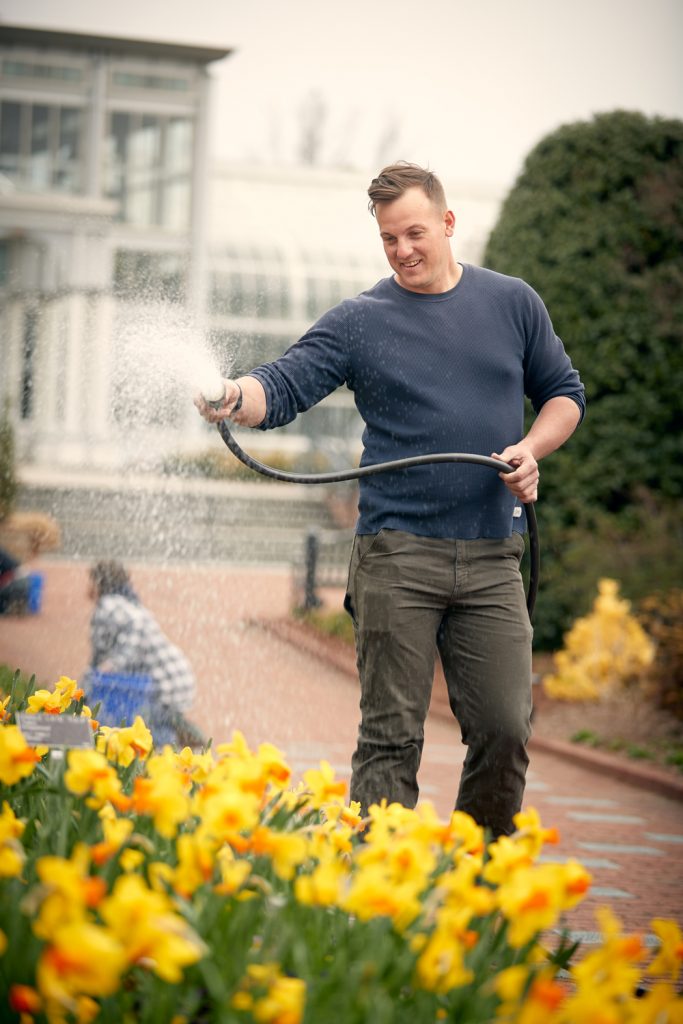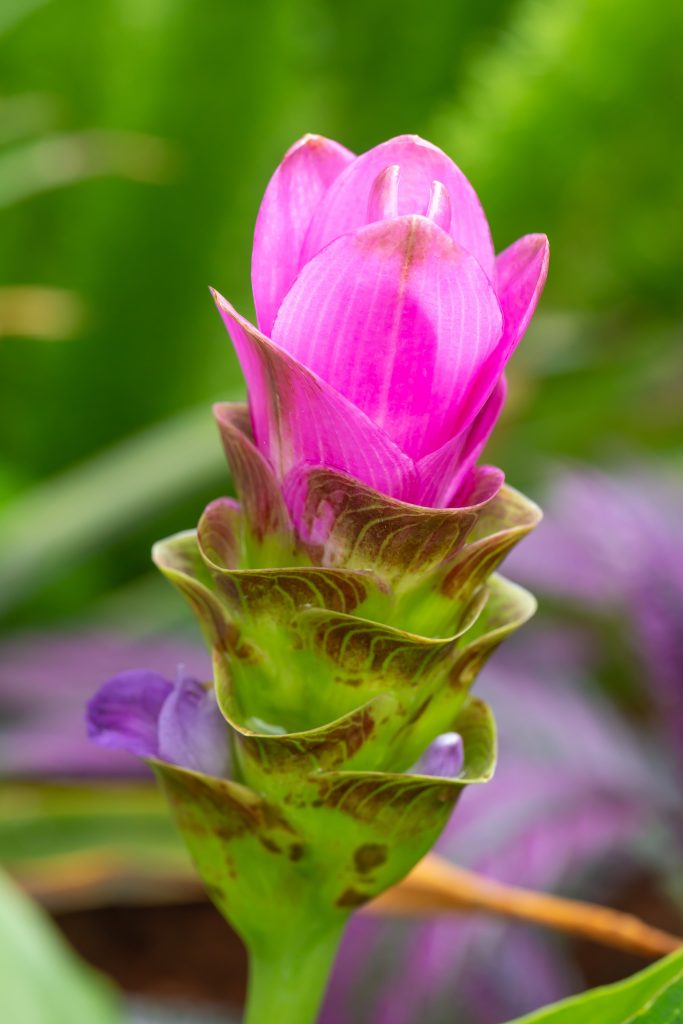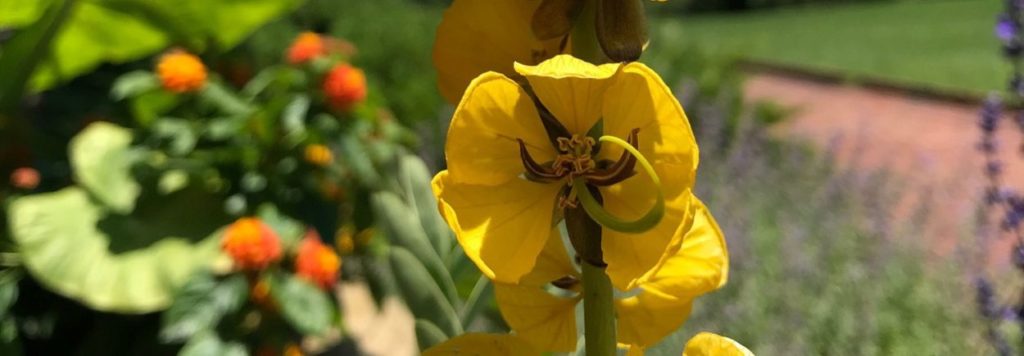Designs for Diversity: Dean Dietrich
IDEA (Inclusion, Diversity, Equity and Accessibility) is an evolving committee where different voices are heard. Departmental representatives gather in a safe, neutral zone to address important topics related to inclusion, diversity, equity and accessibility. The IDEA committee embraces a culture where all people are welcomed, valued and appreciated. This is part of a series of profiles on members of our IDEA committee.
Horticulture has always been part of my life. I grew up on a Pennsylvania farm where my family grew corn, wheat, and barley, and my mom had a small vegetable garden. I studied horticulture at college and interned at Longwood Gardens and Chanticleer Foundation. For the last five years, I’ve been at Lewis Ginter Botanical Garden.
I can’t name a favorite plant because my favorite changes every season, depending on what’s new or in my next design. I can tell you what I don’t like, though: overuse of the same plants in residential landscapes. People miss out when they don’t consider new things.
Last year, I planted popcorn cassia (Senna didymobotrya), and visitors loved it. It’s a sensory plant that smells like buttered popcorn when you rub its leaves. This year, my Central Garden displays included other fascinating plants: root beer plant (Piper auritum), voodoo lily (Amorphophallus konjac), Siam tulip (Curcuma alismatifolia) and lion’s tail (Leonotis leonurus).
People ask me where I get my ideas. I follow designers around the globe and read their books, Instagram and blog posts. Their designs inspire me. Unique plants do, too. Color, texture and the way plants grow are important, but I also consider what will overwinter in Richmond and how much work it will take to maintain.
We’re furthering our botanical collections here at the Garden, especially dogwoods, magnolias and pitcher plants (Sarracenia). We collect them because they’re interesting. Saving germplasm can also help save a species, but you can never collect them all.
Designs for Diversity
Botanical gardens do important work. They’re also a welcoming place – a sanctuary for staff and visitors, in more ways than one. Diversity in species’ genetic material makes the entire population stronger. It adds beauty and interest. It must also be preserved.
That’s like the concepts emerging from the Garden’s new IDEA committee. Each of us is different with our own unique lifestyle and point of view. But we want to live with honesty and transparency. Through IDEA, we can inspire each other and make each other stronger. Together we make Lewis Ginter Botanical Garden a better place to be.


